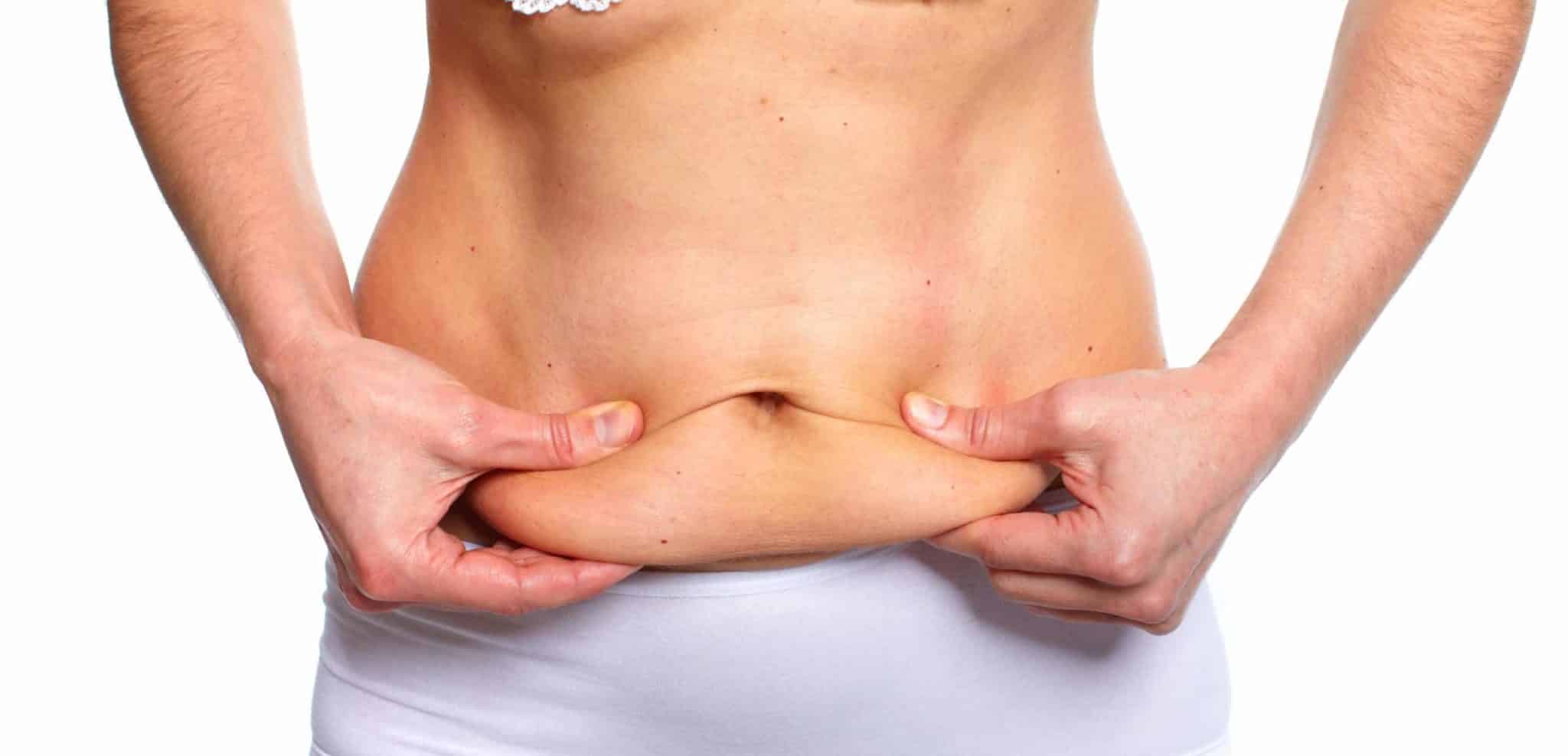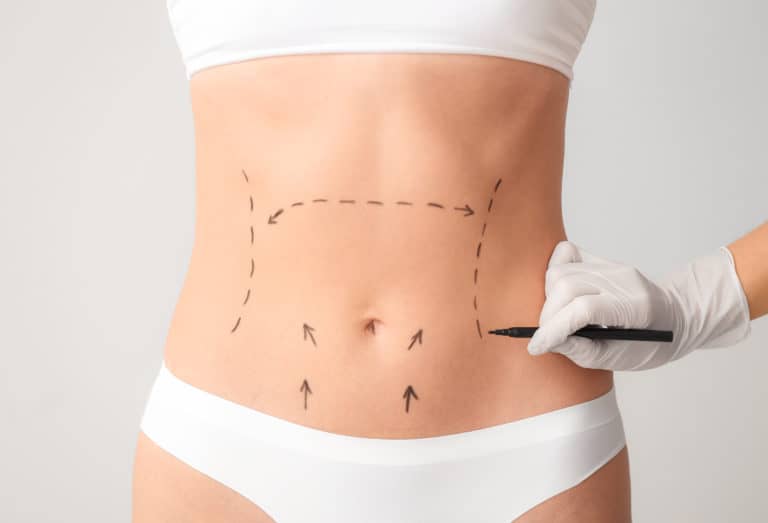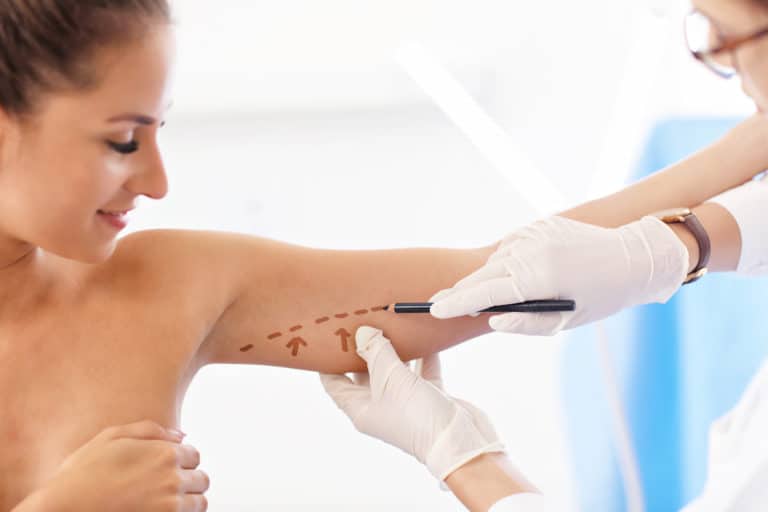Medically Reviewed May 2022, by Mr Sankar - Chief Medical Officer for The Harley Medical Group
Causes | Treatments | Prevention | Takeaways

Overview
If you have recently lost a lot of weight, then you will undoubtedly be very proud of your achievements. Not only will you have reduced your risk of developing diseases, such as heart disease or diabetes, but you may also feel more confident and eager to show off your new figure with a new wardrobe.
However, when people lose a large amount of weight, they can be left with excess skin, especially if they have lost weight quite rapidly. This can negatively affect their quality of life and also be a source of low self-esteem and embarrassment – something which is particularly frustrating when they have worked so hard to lose weight in the first place.
If you have ever wondered how to get rid of excess skin on stomach or other parts of your body, here we will explain your options for treatment.
Loose skin causes
As the largest organ in your body, the skin acts like a protective barrier against the environment. Within its innermost layer, you’ll find proteins such as elastin and collagen, which help to provide strength, firmness and elasticity. These proteins are needed to keep your skin feeling and looking tight.
When you gain weight, your skin expands, especially on the abdomen (stomach). This is to make room for increased growth, such as during pregnancy or fat deposits.
If you have been obese or overweight for a large amount of your life, it’s likely that your skin will have been stretched over a number of years, potentially from childhood or adolescence. When this happens, the elastin and collagen fibres become permanently damaged and their ability to retract is affected, causing loose skin which hangs from the body.
Saggy skin after weight loss is most commonly found in the abdominal area, but can also occur in other areas such as the bra line, arms, thighs or buttocks.

How to get rid of excess skin
If you suffer from saggy skin, you may have both physical and emotional concerns:
- Physical discomfort as a result of your excess skin interfering with normal activity
- Reduced mobility and the ability to exercise
- Skin irritation, such as infections, rashes and ulcers
- Low self-esteem and poor body image
Thankfully, if you are suffering from excess skin after weight loss, there are several options available to you in order to improve your symptoms:
The aim of body-contouring surgery is to remove a large amount of excess skin and fat. During the procedure, a large incision will be made, and you will experience minimal scarring.
When it comes to considering loose skin surgery, there are several different options available to you. The main types of body contouring surgery are:
- Tummy tuck (Abdominoplasty): Where saggy skin is removed from the abdomen.
- Lower-body lift: Where loose skin is removed from the stomach, buttocks, hips and thighs.
- Breast lift: Where excess skin is removed from the breasts and back.
- Thigh lift: Where saggy skin is removed from the inner and outer thighs.
- Arm lift (Brachioplasty): Where loose skin is removed from the upper arms.
Following body contouring surgery, you will usually need to stay in hospital for one to four days, before recovering at home for two to four weeks. Although having loose skin surgery can help to improve your quality of life, it is also important to be aware of complications that could occur as a result of the surgery, like bleeding and infections.
At The Harley Medical Group, we offer several options for skin tightening surgeries, such as tummy tuck and thigh and arm lift.
A non-surgical alternative to loose skin surgery is to have a Radio Frequency Skin Tightening treatment. By creating thermal energy within the dermal tissues, it produces an instant tightening and lifting effect. A course of treatments provides long-term collagen stimulation for more lasting results.
Popular treatment areas include:
- Face
- Jowls
- Neck
- Upper Arms
- Stomach
At The Harley Medical Group, we are proud to offer Promax Radio Frequency technologies in order to treat loose skin on your face, neck or jowls.
Regular strength-training exercise can help you to build muscle mass underneath the skin. By building this solid and stable foundation for your skin to sit on, you will burn more calories, as well as improve the appearance of any loose skin that you might be suffering from.
The good news is that you can do strength training easily at home - a gym membership or any fancy equipment is not required! All you need is some resistance bands, a yoga mat for exercises such as planks and push-ups, and some large filled water bottles to use during weighted lunges and squats.
Maintaining a healthy weight through diet is also crucial. Gaining and losing weight erratically can cause the skin to stretch, which may affect its overall elasticity in the long run.
ProLon's 5-Day Fast Mimicking Diet preserves lean body mass and nourishes your body while supporting overall health.
Surgical procedures

When to see a doctor
There are certain instances where it would be a good idea to go and see your doctor about your loose skin after weight loss.
For example, if you experience loose stomach skin or loose skin after pregnancy that rubs or chafes (especially during physical activity), then this can cause skin infections, rashes, pain, ulcers and irritations that can be very sore and uncomfortable.
In addition, if you find that your excess skin causes annoying movement and pain, then you might like to explore your options for compression garments that can be worn underneath your clothing and help to smooth your shape.
There are also a number of psychological and lifestyle issues that you may experience from having loose stomach skin, such as low self-esteem, anxiety, difficulty in doing certain tasks or playing certain sports and not being able to wear certain clothes.
Speak to a patient advisor BOOK A CONSULTATION
Prevention
If you are wondering how to get rid of excess skin on stomach, then prevention is absolutely key. This means losing weight at a slow and steady pace, whereby you don’t lose more than one or two pounds a week.
This is the ideal rate for weight loss and will also ensure that your skin's elasticity is protected. Remember, the more quickly you lose your weight, it is more likely that excess skin will be a problem for you.
Key takeaways
How to get rid of loose belly skin can be a significant concern for people who have lost a lot of weight very quickly and have been left with stretched, loose skin as a result.
At The Harley Medical Group, we understand that loose skin after pregnancy or weight loss can be distressing, but thankfully this is not a condition that you have to live with – whether you try strength training exercises to improve your condition, or explore options for non-surgical or surgical treatment.
Related Conditions

Saggy breasts
Sagging breasts or ‘breast ptosis’ is usually nothing more than a harmless, aesthetic feature. Breast ptosis often refers to lower appearing nipples, or those that point downwards and it can range from mild to severe...




